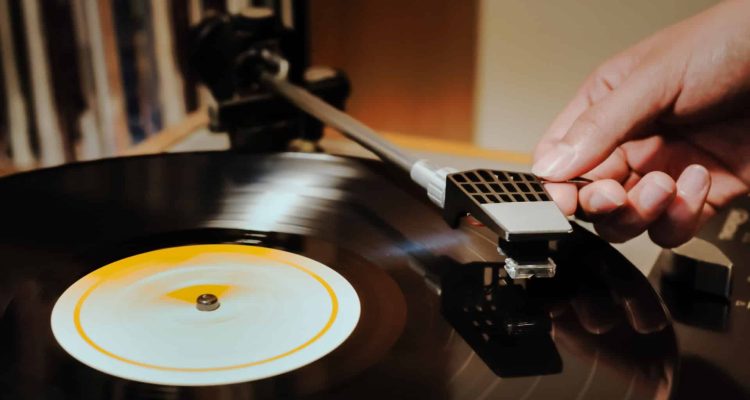

The way we hear things has a lot to do with which way we are facing and our focus. For example, you can be in a room with music playing and tune it out or listen to several things at once. This is because the brain has a powerful signal processor. Microphones may not have brains, but they do have different pickup patterns, allowing them to pick up sound from different directions.
Which microphone you choose is going to depend on the job you have planned for it. For most applications, you’ll use either a cardioid or omnidirectional mic. Here is what you need to know about these two types of mics so that you can make the right choice.
What Is a Cardioid Microphone?
A cardioid microphone is the most sensitive to sounds coming directly from the front of the instrument. While these microphones pick up sounds from the sides, these will be lessened. Furthermore, any sound from the rear will be significantly dampened.
Most of the time, this is what you want with a studio microphone that you are using to record vocals or anything else that is supposed to sound “close” and “dry.” It is also very common for stage microphones to be this type.
A cardioid microphone is an ideal choice when you want to focus on a particular sound or keep your sounds separate so that you can mix them later. If you want to add depth to your sound, this microphone can also be useful. When you move closer to the mic, there tends to be an increase in bass, which you can use strategically.
What Is an Omnidirectional Microphone?
An omnidirectional microphone is one that is sensitive to sound from anything going on around it. In other words, it picks up sound equally from every direction.
This type of microphone is useful for home studio recordings, where you are looking to pick up the room ambiance that includes percussion, acoustic guitar, and background vocals. They are also used for things like orchestra records.
An omnidirectional mic is probably a better choice whenever you want to record a group of instruments or people. You can assemble everyone around a single mic and capture the sound equally.
That said, you can also use an omnidirectional mic for a single performer if that person tends to move around a lot. Using a cardioid mic in this scenario could produce a level change as the sound source moves away from the front of the mic.
You can purchase omnidirectional mics that attach to your lapel, sit on a stand, or are made for handheld use. The type you choose should correspond to your particular performance or recording needs.
Considerations When Choosing Cardioid vs. Omnidirectional Mics
How you plan to use your microphone is going to influence which type you choose. Here are some basic considerations when deciding between a cardioid and omnidirectional mic.
Leakage
When you have a multi-musician setup, leakage can be an issue with omnidirectional mics. You can try both types of mics to see which one gives you the best effect.
Channel Separation
Channel separation is likely to be less precise with an omnidirectional mic than with a cardioid one. If you need more channel separation, you can either move closer to your omni mic or use a cardioid microphone.
Gain-to-Feedback Ratio
The gain-to-feedback ratio will vary significantly with these two types of mics. In a live performance scenario (unless you are close miking), a cardioid mic will generally give much better gain before feedback. With an omni mic, getting off axis will not change the sound nearly as much as a cardioid. With cardioid mics, feedback can appear unexpectedly, whereas it tends to build up slowly with an omni mic.
Polar Patterns
In theory, an omnidirectional mic will pick up sound uniformly from every direction. At very high frequencies, however, this type of mic does become more directional. This is dependent on the size of the mic. A cardioid mic is more directional in the higher frequencies and less so in the lower frequencies.
Off-Axis Coloration
A cardioid mic may provide the ideal flat frequency on-axis. When off-axis, the response can be less than optimal. The cardioid pattern is not uniform over all frequencies, usually with the high frequencies much more attenuated when off-axis. If you plan to use this type of mic, understand its off-axis response and how it will affect your sound. Sometimes an omni mic is a better choice.
Proximity Effect
Due to their design, cardioid mics have what is known as the proximity effect. This is an increase in bass response below 200 Hz when getting close to the mic. This may or may not be beneficial in your application.
Design
Omnidirectional microphones are made with a pressure-type transducer, and cardioid mics are made with a pressure gradient transducer. The former is a more straightforward design, which can result in a cleaner sound and provide you with more long-term reliability.
Low-Frequency Response
Omnidirectional microphones have lower distortion and more extended low-frequency response than cardioid mics at distances over a foot. If the proximity effect of the cardioid is too much, the addition of a high pass filter in the circuit can help.
Distortion
Distortion is a serious consideration when it comes to your microphone choice. Cardioid mics tend to distort a bit more than omnidirectional ones. If you choose a cardioid mic, be sure to select a high-quality one with low distortion.
Wind and Pop Noises
Cardioid mics are far more susceptible to wind, breath noises and pops than omni mics. If an omni mic is not suitable for your application, foam windscreens and high pass filters can help when using a cardioid.
Galaxy Audio Has the High-Quality Microphones You Need
No matter your intended purpose, Galaxy Audio can outfit you with the highest-quality microphone. We carry both cardioid and omnidirectional mics for studio recording, live performance, and professional work.
Galaxy Audio has been in the business of producing superior sound products for over 45 years. The team has provided sound for stages and venues across the country, as well as for legendary artists like Janis Joplin, Aretha Franklin, James Brown, and The Bee Gees. Contact us today to learn more about how our products can enhance the quality of your performance.






